New products at Crocus
by Sarah - August 18th, 2010.Filed under: Crocus, New Products.
Crocus just added these new products
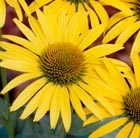
coneflower £9.99
Position: full sunSoil: most soils, except very dry or boggyRate of growth: average Flowering period: June to SeptemberHardiness: fully hardyA recently introduced variety that we were keen to include in our range as we think it is one of the best yellow coneflowers. For several months each year from mid summer it produces super-sized, butter yellow flowers that can grow up to 10cm across. Perfect with reds and other autumnal tones, it also associates really well with grasses. It is attractive to bees and butterflies, and birds will flock to the seedheads.Garden care: Lift and divide congested colonies in autumn or spring. In autumn cut back all dead flower stems to the ground. Coneflowers benefit from a spring or autumn mulch with well-rotted compost.

coneflower £8.99
Position: full sunSoil: most soils, except very dry or boggyRate of growth: average Flowering period: June to SeptemberHardiness: fully hardyDazzling orange petals that are slightly darker at their base, surround a prominent orange-red boss. This creates a zesty combination of colour that looks great in a ‘hot’ themed border. The flowers have a spicy fragrance, are look great when cut and popped into a simple arrangement in a vase. The long lasting flowers attract butterflies and bees and the birds will flock to them after they have set seed.Garden care: Lift and divide congested colonies in autumn or spring. In autumn cut back all dead flower stems to the ground. Coneflowers benefit from a spring or autumn mulch with well-rotted compost.
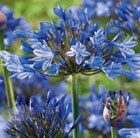
African lily £6.99
Position: full sunSoil: fertile, moist, well-drained soil (or John Innes no. 3 compost for containers)Rate of growth: average Flowering period: July to SeptemberHardiness: frost hardy (may need protection in winter)Tall, vigorous and strikingly architectural, this clump-forming perennial produces massive flowerheads, up to 30cm across, of dark-veined, powder blue flowers from mid summer. These form above the strap-shaped, glossy green leaves on top of sturdy, upright stems and can last for several weeks before they start to fade. A taller variety that makes a big impact when planted in bold swathes, or potted up into substantial pots.Garden care:Keep well-watered during the growing season, applying a balanced liquid fertiliser each month from spring until the plant flowers. In cold, exposed areas protect the crown of the plant with a deep, dry winter mulch.
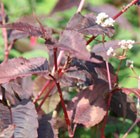
bistort £6.99
Position: full sun or partial shadeSoil: any moist soil, including heavy clayRate of growth: fast-growingFlowering period: July to SeptemberHardiness: fully hardyAn unusual variety of bistort, grown for its dramatic foliage that changes colour with the seasons. In spring, its velvety, burgundy-plum, long heart-shaped leaves are set off by a silvery, metallic, chevron-shaped marking, which gradually turns red as the foliage becomes greener. It is fairly vigorous, though not invasive, and forms a natural mound, with sprays of tiny white flowers in late summer. Try it as an eyecatching groundcover plant in moist, even boggy soil or beside water or as a handsome plant in a container.Garden care: Keep well watered, unless the soil is naturally moist. Lift and divide congested colonies in spring or autumn.

hardy gerbera £6.99
Position: full sunSoil: moderately fertile, humus-rich, well-drained soilRate of growth: average to fast-growingFlowering period: May to OctoberFlowering colour: creamy-whiteHardiness: frost hardy (may need protection in winter)Each creamy-white ray floret has a soft pink flush on the reverse and is arranged around a pale lemon eye. The daisy-like flowerheads top sturdy, upright stems and provide an interesting contrast to the rosettes of lush, dark green foliage.Garden Care: Water freely when actively growing, but avoid excessive winter wet. In colder areas grow in a pot and move to an sheltered spot when the temperatures drop.
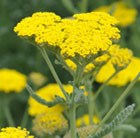
yarrow £6.49
Position: full sunSoil: well-drained, including dry soilRate of Growth: averageFlowering period: June to SeptemberHardiness: fully hardyAchilleas are in vogue again, thanks in part to the many different colours and cultivars that have become available in recent years. Achillea was named by Linnaeus, the modern father of horticulture, in honour of the Greek hero Achilles. They are generally short-lived perennials, with flat, plate-like flowerheads held high on tall stems, and ferny foliage beneath. This one has large, flat clusters of canary-yellow flowers, and is more resistant to flopping over than most other achilleas. It is long flowering, and drought-tolerant. Try it in a sunny spot towards the back of an herbaceous border, in a border of ‘hot’ colours or among grasses. It makes an excellent cut flower.Garden care: Cut down to the ground in late winter, but resist the urge to do this earlier, as the seed heads look lovely in the winter light. Pull out seedlings as they appear, as they rarely match the host plant. Lift and divide large clumps in late autumn or early spring.
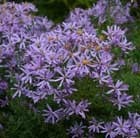
michalmas daisy £5.99
Position: full sunSoil: fertile, moist, but well drained soilRate of growth: fast-growingFlowering period: September – OctoberFlower colour: lilac – blue with a yellow centreHardiness: fully hardyA compact Michaelmas Daisy that will form neet clumps to around 45cm tall. In late summer and autumn it is covered in masses of lilac-blue flowers with a yellow centre making it look like a colourful dome. These plants flower best in full sun, although they will tolerate a little shade and really pack a last minute punch in the front of a border. The flowers are very attractive to butterflies too so this is a great plant to include in your wildlife garden.Garden care: Cut back in late autumn after it has finished flowering and apply a generous layer of mulch.
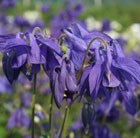
granny’s bonnet £5.99
Position: full sun or partial shadeSoil: fertile, moist, but well-drained soil Rate of growth: average Flowering period: May-JuneHardiness: fully hardyThis variety of columbine has pretty pale blue flowers which make a fine display during the late spring. Sturdy stems carry sprays of some 5-10 blooms, each shaped with elegant long spurs in blue and contrasting ivory coloured trumpet. Happy in either full sun or light shade, this plant will prove a welcome nectar point for bees and butterflies.Garden care: Remove spent flowers to prevent seed production if no new plants are wanted. Plants are sometimes short-lived so may need to be replaced every two to three years. Contact with sap may cause irritation.






